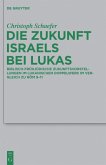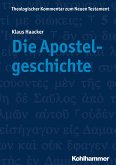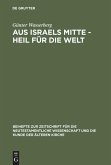The many scriptural allusions in Luke 1-2 clearly show that the double work of Luke is intended to be understood as a continuation of the "Scriptures" (i.e., the Old Testament). The scriptural quotations referring to Jesus and his fate in this double work, which are almost all spoken by narrative figures, are largely proleptic in Luke 1-23 and mostly analeptic in Luke 24 and the Acts of the Apostles. The crux is the discourse by the resurrected Jesus in Luke 24, which helps Peter in particular come to believe. Scriptural quotations in Luke are also used as both instructions for action and interpretations of the present. Comparison between the use of quotations in narrative texts by other ancient authors (such as the Books of the Maccabees, Josephus, Herodotus, Thucydides, and Polybius) illustrates the special nature of the citation style in Luke.
Durch die vielfältigen Schriftallusionen in Lk 1f. wird deutlich gemacht, daß das lukanische Doppelwerk als Fortschreibung der "Schriften" (= des AT) verstanden werden will. Die auf Jesus und sein Geschick bezogenen Schrift-Zitate im lukanischen Doppelwerk, die sich nahezu ausschließlich im Mund von Erzählfiguren befinden, sind in Lk 1-23 überwiegend proleptisch und in Lk 24 sowie der Apostelgeschichte überwiegend analeptisch ausgerichtet. Dreh- und Angelpunkt sind die Reden des Auferstandenen in Lk 24, mit Hilfe derer vor allem Petrus zum Glauben kommt.
Darüber hinaus werden Schriftzitate bei Lukas auch als Handlungsanweisung sowie zur Gegenwartsdeutung herangezogen. Ein Vergleich mit der Verwendung von Zitaten in narrativen Texten anderer antiker Autoren (z.B. Makkabäerbücher, Josephus, Herodot, Thukydides, Polybios) verdeutlicht die Besonderheit der lukanischen Zitationsweise.
Durch die vielfältigen Schriftallusionen in Lk 1f. wird deutlich gemacht, daß das lukanische Doppelwerk als Fortschreibung der "Schriften" (= des AT) verstanden werden will. Die auf Jesus und sein Geschick bezogenen Schrift-Zitate im lukanischen Doppelwerk, die sich nahezu ausschließlich im Mund von Erzählfiguren befinden, sind in Lk 1-23 überwiegend proleptisch und in Lk 24 sowie der Apostelgeschichte überwiegend analeptisch ausgerichtet. Dreh- und Angelpunkt sind die Reden des Auferstandenen in Lk 24, mit Hilfe derer vor allem Petrus zum Glauben kommt.
Darüber hinaus werden Schriftzitate bei Lukas auch als Handlungsanweisung sowie zur Gegenwartsdeutung herangezogen. Ein Vergleich mit der Verwendung von Zitaten in narrativen Texten anderer antiker Autoren (z.B. Makkabäerbücher, Josephus, Herodot, Thukydides, Polybios) verdeutlicht die Besonderheit der lukanischen Zitationsweise.
" Sein [...] überzeugendes Prozedere und seine Ergebnisse führen zu einem tieferen Verständnis des lk Gesetzesverständnis und Schriftgebrauchs sowie der Funktion dieses Gebrauchs für die lk Erzählabsicht und Theologie. Damit leistet Rusam einen wichtigen Beitrag zur ntl Theologie und ihrer atl Verwurzelung."
Christoph Stenschke in: Novum Testamentum XLVII/2005
"All in all a fine study with an emphasis on the theology of Luke but also good insights on words, style and other linguistic matters."
Filologia Neotestamentaria 16/2003
Christoph Stenschke in: Novum Testamentum XLVII/2005
"All in all a fine study with an emphasis on the theology of Luke but also good insights on words, style and other linguistic matters."
Filologia Neotestamentaria 16/2003








